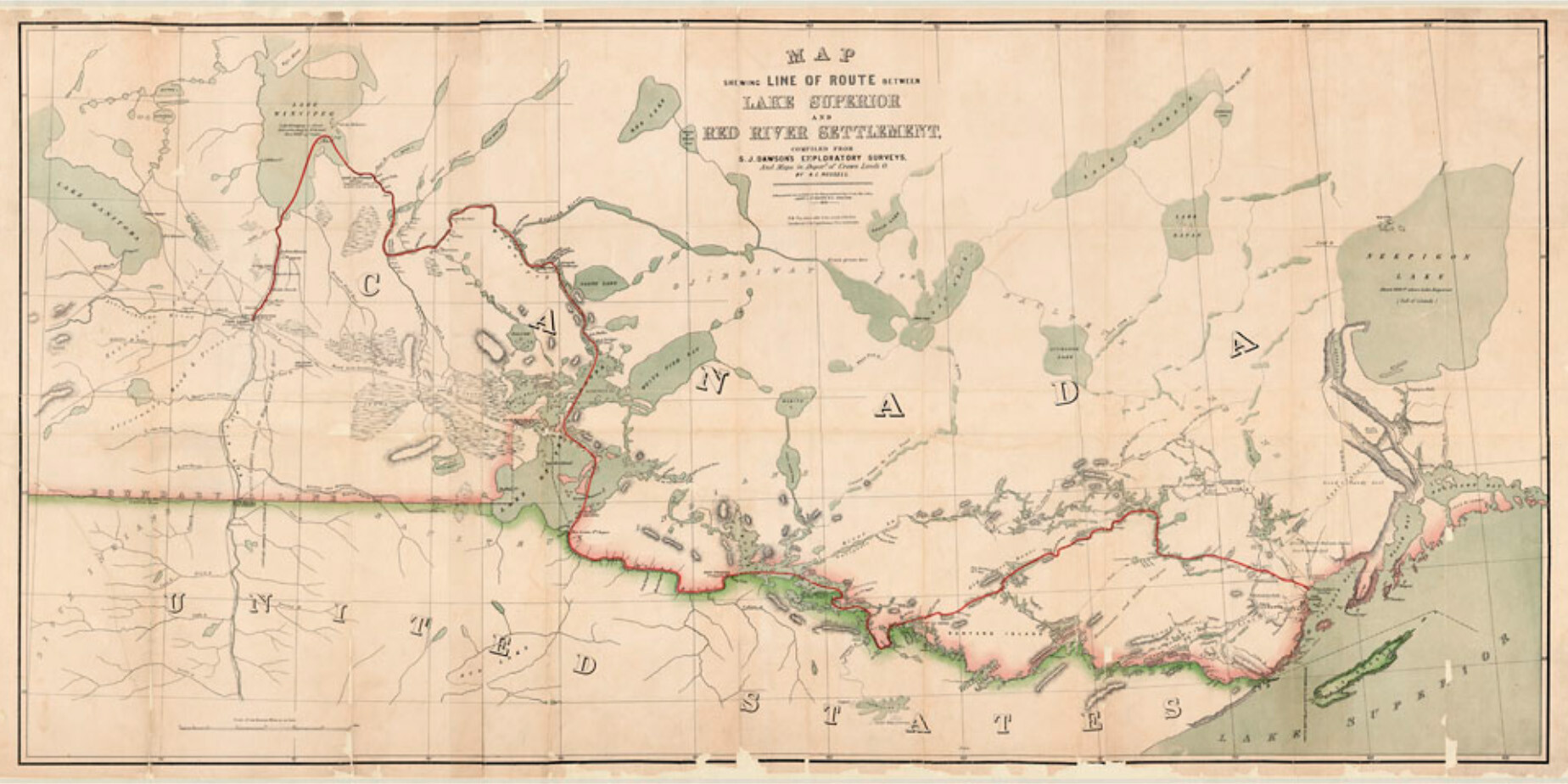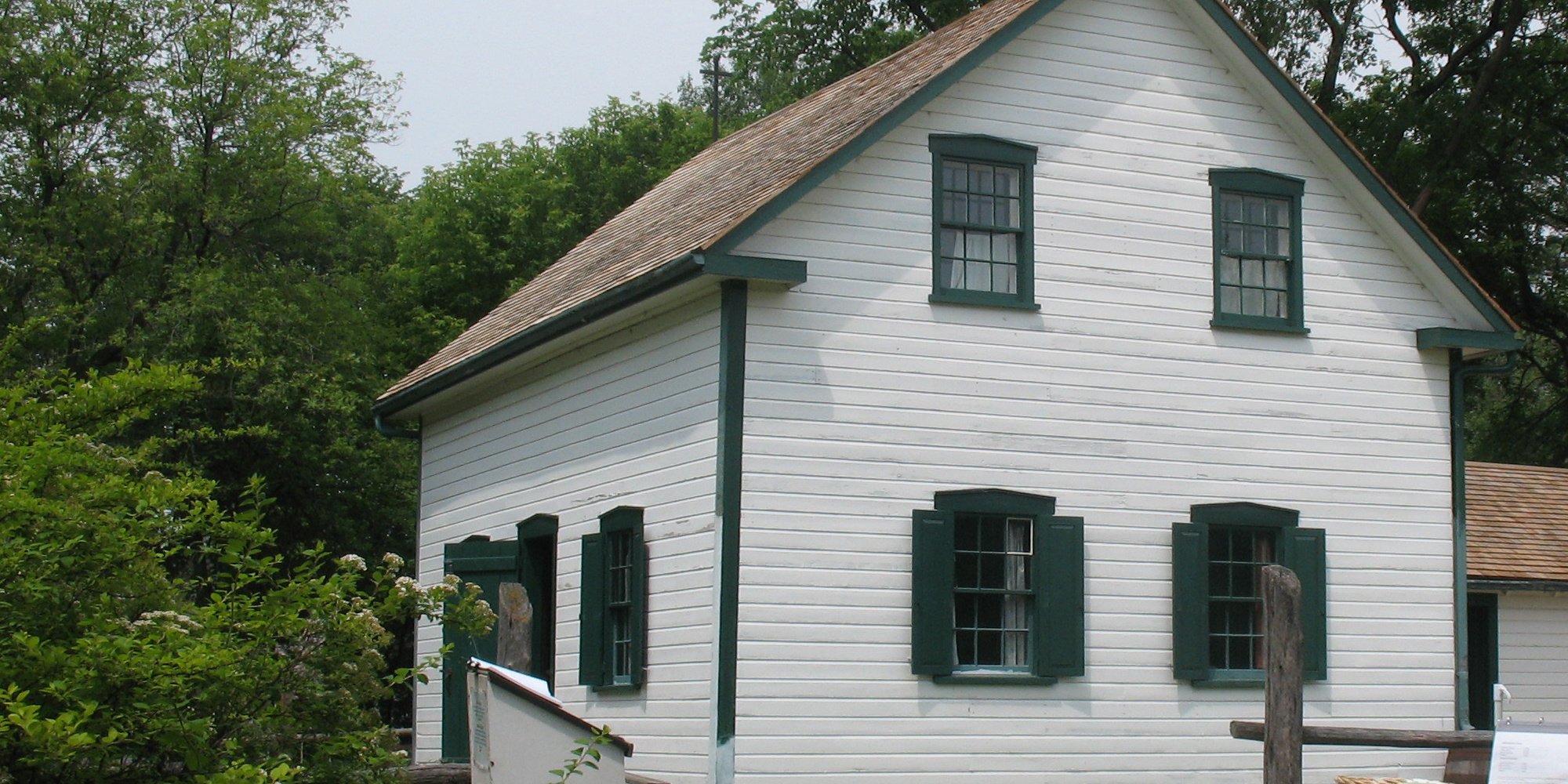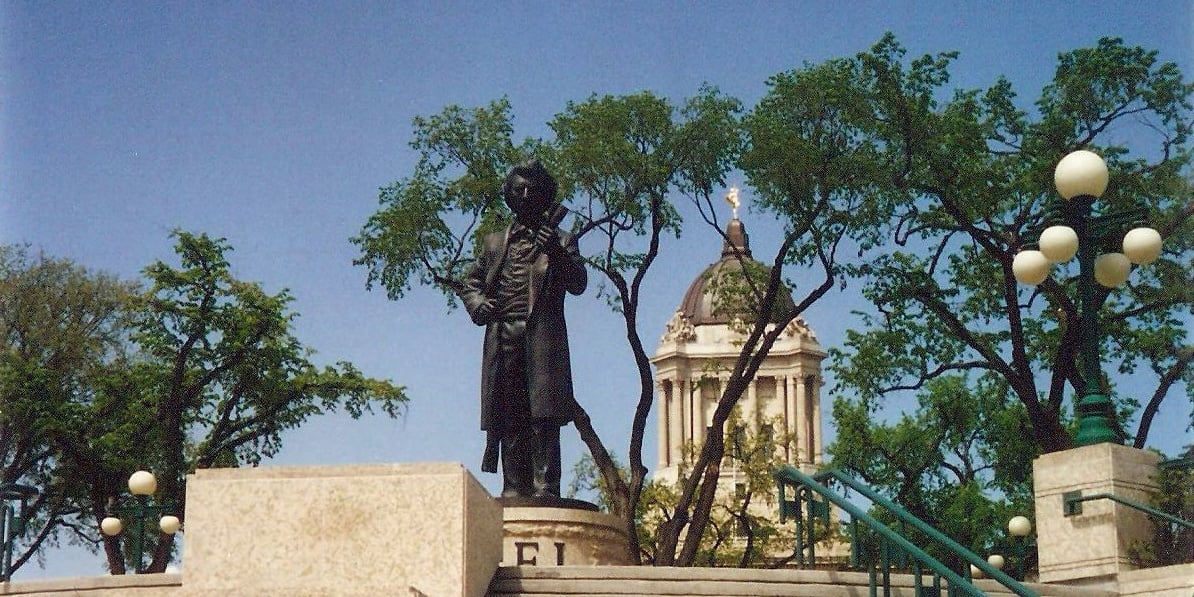Louis Riel Jr and the Northwest Rebellion of 1885
The Northwest Rebellion of 1885 began with Louis Riel, Jr. returning with his wife, two small children and a few supporters to seize the church at...

In 1801, a group of Métis settled at the intersection of the Red and Assiniboine Rivers, where Winnipeg stands today. They were referred to as “Freemen” because they were bound by neither Indian nor Fur Trade company law. They set up narrow river lots similar to the seigneurial lots created earlier along the St. Lawrence.
In 1811, the Hudson’s Bay Company granted 116,000 square miles of land in the fertile Red River Valley to Lord Selkirk. Efforts by the settlers to restrict Aboriginal hunting and trading practices led to conflict. In 1816, Cuthbert Grant Jr. led the community to victory at the battle of Seven Oaks, after which he unfurled the flag of the Métis Nation.
By the 1840s, the Red River Settlement’s population had swelled to 5,800 Métis and 1,600 non-Aboriginals. The Hudson’s Bay Company was uneasy about the threat to its fur trading monopoly posed by the Settlement’s burgeoning commercial activity. In 1849, the Company’s directors persuaded the North-West Police to charge four community men with “smuggling” furs. Louis Riel, Senior, and approximately 300 other community members surrounded the courthouse and heard the court pronounce the traders “Guilty”, but released without punishment. The Métis interpreted this ambiguous result as an acquittal and concluded that no one could be penalized for trading furs. The case is significant because it sparked the perception that the Hudson’s Bay Company’s fur trading monopoly had been broken, fanning the aspirations of the Métis.
The new Dominion of Canada recognized the urgent need to consolidate its western and southern borders against the threat of American expansion, and the Hudson’s Bay Company saw that it was unable to control the Red River Settlers. In 1869, one of the key events in Canadian history quietly unfolded: the Dominion of Canada purchased the vast territory of Rupert’s Land [1] from the Hudson’s Bay Company for the sum of 300,000 English pounds. By that time an estimated 11,000 people lived in the Red River Settlement yet no one from the Settlement was informed about the sale.
The community rebelled, under the leadership of Louis Riel, Junior. After a period of brilliant military and political success, Riel allowed his new Provisional Government to execute Thomas Scott, an unrepentant Orangeman from Ontario who had been charged with bearing arms against the new state. Scott’s instant martyrdom following his execution led to Riel’s undoing.
In 1871, the Parliament of Canada passed the Manitoba Act: providing for the acceptance of the Red River Settlement and surrounding territories into Canada as a full-fledged province, and calling for the dispatch of twelve hundred soldiers to ‘protect’ the settlements. After more than three months of hard marching through the bush and muskeg, the troops from Ontario arrived to arrest Riel. He fled to the United States, where he remained in exile for more than a decade. [2]
This information has been reproduced from our book, Working Effectively with Indigenous Peoples®, included with our training of the same name.
[1] The Company kept control of just 6 million of the 120 million acres stretching from Fort Garry to the Rocky Mountains.
[2] Riel remained a powerful political force in exile; he was elected three times to the House of Commons in absentia. Once he snuck into Ottawa to sign the Members’ Register in the House, barely escaping with his life.
Featured photo: Map showing lines of route between Lake Superior and Red River Settlement, 1870. Photo: Library and Archives Canada.

The Northwest Rebellion of 1885 began with Louis Riel, Jr. returning with his wife, two small children and a few supporters to seize the church at...

Winnipeg, Manitoba, May 23, 2013 — On behalf of the Honourable Peter Kent, Canada’s Environment Minister and Minister responsible for Parks Canada,...

In Manitoba, Louis Riel Day is the third Monday in February and is a provincial holiday (first celebrated in 2008) - this date does not coincide with...